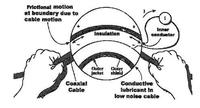-
Number of university-hosted start-up incubators grows
U.S. colleges and universities increasingly resemble business incubators, as the number of school-supported startups is rising.Of the 1,195 incubator programs in North America in 2012, about 400 – or a third — were primarily sponsored by a college or university, an increase from just 20 percent in 2006.In 2012, U.S. higher education institutions earned $2.6 billion in license income, and helped launch 705 startups.
-
-
Geologists: Sandy could happen again
Sandy’s storm surge hit the coast at high tide, but storm and tidal conditions were not the only cause of the devastation. Seawaters off New York’s coast have risen sixteen inches since 1778, the year of New York City’s first major recorded storm. Geologists say that due to rising sea levels, smaller storms could produce significant flooding.
-
-
New barrier system to protect Venice from rising seas

The City of Venice, Italy has carried out the first test of its $7.3 billion barrier system designed to protect the city from rising sea levels. The system, known as MOSE (MOdulo Sperimentale Elettromeccanico), consists of seventy-eight mobile barriers divided into four sections at the three inlets to the Venice lagoon.
-
-
Using hills to shelter buildings from tornadoes
Researchers have demonstrated the influence of hills on tornadoes. The researchers’ models revealed that the height of a hill and the size of a tornado’s vortex have a significant effect on the tornado’s destructive power. The findings could be used to identify safer areas for construction.
-
-
U.S. formulates strategy for a new Arctic landscape
U.S. national security officials have become increasingly concerned about the national security implications of an ice-free Arctic. The Arctic will become ice-free during the summer by mid-decade. In a strategy document, the Pentagon says: “Melting sea ice in the Arctic may lead to new opportunities for shipping, tourism, and resource exploration, but the increase in human activity may require a significant increase in operational capabilities in the region in order to safeguard lawful trade and travel and to prevent exploitation of new routes for smuggling and trafficking.”
-
-
Coast Guard to discuss new U.S. Arctic strategy
The future of the Arctic has become a hot topic in U.S. national security, energy, and policy circles. The Washington Homeland Security Roundtable (WHSR) has organized a forum for private-sector leaders in which Vice Admiral Peter Neffenger, deputy commandant for operations of the U.S. Coast Guard (USCG), and Captain Jon Spaner, USCG director of emerging policy, will discuss the ramifications of climate-driven changes in the Arctic for U.S. national security and maritime operations, and share insights on the role of the USCG in meeting the challenges posed by a new ocean created by rapidly melting ice.
-
-
Maryland preparing for sea level rise
Maryland has 3,100 miles of tidal shoreline. A scientific report recommends that it would prudent for the state to prepare for a sea level rise of 1.4 feet by 2050.Maryland’s CoastSmart Communities Initiative (CCI) provides grant funding for coastal communities which want to reduce their vulnerabilities to the effects of coastal hazards and sea level rise by becoming ready, adaptive, and resilient.
-
-
Snake robots move quickly in confined spaces, rough terrain

Snakes usually travel by bending their bodies in the familiar S-pattern. When they are stalking prey, however, snakes can move in a straight line by expanding and contracting their bodies. This “rectilinear gait” is slow, but it is quiet and hard to detect—-a perfect way to grab that unsuspecting rodent. This “limbless locomotion” is a highly effective way for a robot to move through cluttered and confined spaces.
-
-
Maryland preparing for sea level rise
Maryland has 3,100 miles of tidal shoreline. A scientific report recommends that it would prudent for the state to prepare for a sea level rise of 1.4 feet by 2050.Maryland’s CoastSmart Communities Initiative (CCI) provides grant funding for coastal communities which want to reduce their vulnerabilities to the effects of coastal hazards and sea level rise by becoming ready, adaptive, and resilient.
-
-
Renewable fuel standard: mend it, don’t end it
Congress should minimally modify — and not, as petroleum-related interests have increasingly lobbied for, repeal — the Renewable Fuel Standard (RFS), the most comprehensive renewable energy policy in the United States, according to a new paper. The paper argues that RFS mandates merely ought to be adjusted to reflect current and predicted biofuel commercialization realities.
-
-
U.S. elementary school math: Half-century of problematic approach
During the “New Math” movement of the 1960s, a team of mathematicians developed a new structure for elementary mathematics. Instead of having a single subject, namely, school arithmetic, as its central core, this new structure instead had eight “strands” that were supposed to tie together elementary mathematics content. The strands structure has persisted to this day. A new paper argues that the strands structure has significantly weakened U.S. school mathematics.
-
-
ASCB: U.S. scientific research will "pay dearly" for shutdown
The American Society for Cell Biology (ASCB) added its voice to those of other scientific and professional groups in warning that the federal government’s partial shutdown will hurt patients, researchers, and especially the U.S. research effort, long after an agreement to end the impasse is reached. “As America keeps hitting the brakes on scientific research, we are, in effect, accelerating the damage done to our continued leadership in global bioscience, in health outcomes and in the economic power that we have always derived from basic research,” Dr. Bertuzzi, executive director of the ASCB said. “Americans will pay dearly for these slowdowns, sequestrations, and shutdowns in finding cures and on maintaining economic competitiveness.”
-
-
Sea power: extracting energy from ocean waves

As sources of renewable energy, sun and wind have one major disadvantage: it is not always sunny or windy. Waves in the ocean, on the other hand, are never still. Researchers are now aiming to use waves to produce energy by making use of contact electrification between a patterned plastic nanoarray and water.
-
-
Compact, high-power terahertz source at room temperature developed

Terahertz (THz) radiation — radiation in the wavelength range of 30 to 300 microns — is gaining attention due to its applications in security screening, medical and industrial imaging, agricultural inspection, astronomical research, and other areas. Traditional methods of generating terahertz radiation usually involve large and expensive instruments, some of which also require cryogenic cooling. Researchers have developed a compact, room-temperature terahertz source with an output power of 215 microwatts.
-
-
ACS: Shutdown undermines U.S. innovation, competitiveness, critical services
American Chemical Society (ACS) president Marinda Li Wu said that the budget impasse is effectively choking America’s science innovation pipeline, strangling new discoveries, future economic growth, and job creation. “[T]o shut down a critical part of our nation’s research and innovation pipeline puts our nation at a severe competitive disadvantage globally,” said Wu. “A government shutdown that closes the world’s largest research system can lead to unintended negative consequences putting at peril America’s economic growth and long-term stability.”
-
More headlines
The long view
Autonomous Vehicle Technology Vulnerable to Road Object Spoofing and Vanishing Attacks
Researchers have demonstrated the potentially hazardous vulnerabilities associated with the technology called LiDAR, or Light Detection and Ranging, many autonomous vehicles use to navigate streets, roads and highways. The researchers have shown how to use lasers to fool LiDAR into “seeing” objects that are not present and missing those that are – deficiencies that can cause unwarranted and unsafe braking or collisions.
Tantalizing Method to Study Cyberdeterrence
Tantalus is unlike most war games because it is experimental instead of experiential — the immersive game differs by overlapping scientific rigor and quantitative assessment methods with the experimental sciences, and experimental war gaming provides insightful data for real-world cyberattacks.
Prototype Self-Service Screening System Unveiled
TSA and DHS S&T unveiled a prototype checkpoint technology, the self-service screening system, at Harry Reid International Airport (LAS) in Las Vegas, NV. The aim is to provide a near self-sufficient passenger screening process while enabling passengers to directly receive on-person alarm information and allow for the passenger self-resolution of those alarms.
Falling Space Debris: How High Is the Risk I'll Get Hit?
An International Space Station battery fell back to Earth and, luckily, splashed down harmlessly in the Atlantic. Should we have worried? Space debris reenters our atmosphere every week.
Testing Cutting-Edge Counter-Drone Technology
Drones have many positive applications, bad actors can use them for nefarious purposes. Two recent field demonstrations brought government, academia, and industry together to evaluate innovative counter-unmanned aircraft systems.
Strengthening the Grid’s ‘Backbone’ with Hydropower
Argonne-led studies investigate how hydropower could help add more clean energy to the grid, how it generates value as grids add more renewable energy, and how liner technology can improve hydropower efficiency.
